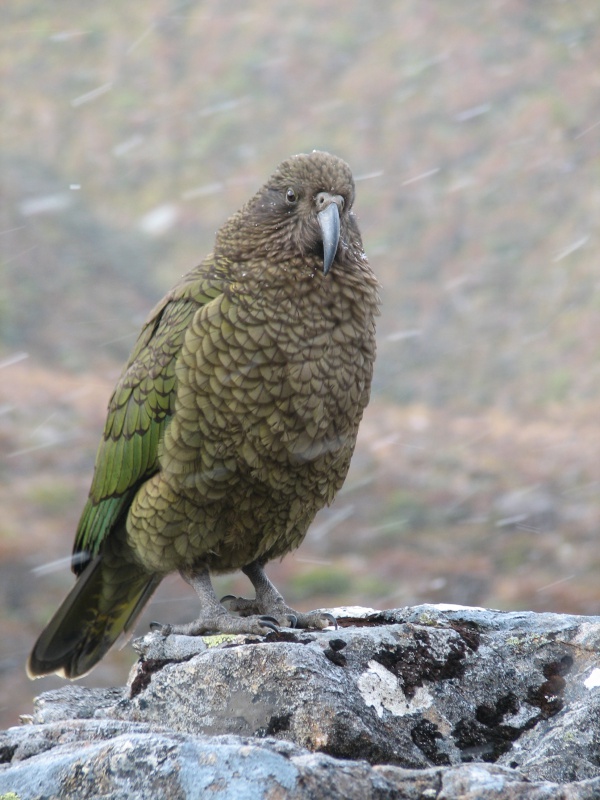Facts About Kea
The kea is a fascinating and unique parrot native to the forested and alpine regions of New Zealand's South Island. It is the only alpine parrot in the world, renowned for its remarkable intelligence and curiosity. The kea’s diet is quite varied, consisting of everything from carrion and insects to roots, leaves, berries, and nectar.
Historically, the kea faced significant threats because it was believed to attack livestock, leading to bounty hunting. Fortunately, in 1986, the kea received full protection under the Wildlife Act.
Kea parrots nest in burrows or crevices among tree roots. They are highly intelligent, known for their problem-solving skills and cooperative behavior. Belonging to the genus Nestor, the kea is closely related to other parrot species. They are easily recognizable by their olive-green plumage, orange underwings, and long, curved upper beak.
These birds can be found from lowland river valleys to alpine regions of the South Island, often associated with southern beech forests. Current population estimates suggest there are between 3,000 and 7,000 keas left. They typically breed in beech forests at high altitudes and exhibit polygynous relationships.
The kea’s diet is diverse, including various plant species, insects, and occasionally other birds and mammals. Their occasional predation on sheep has historically put them at odds with sheep farmers. Keas are also known for their curiosity towards humans, sometimes leading to both amusing and troublesome interactions.
Despite being classified as endangered, keas face numerous threats such as lead poisoning, predation, and habitat loss. These challenges have led to various conservation efforts. Nevertheless, keas still suffer from deliberate harm, prompting initiatives and citizen science projects to monitor and protect them. There are even proposals to reintroduce keas into predator-free zones in the North Island to aid their conservation.
The kea’s story is a testament to the challenges and triumphs of wildlife conservation, highlighting the importance of ongoing efforts to protect these intelligent and curious birds.
